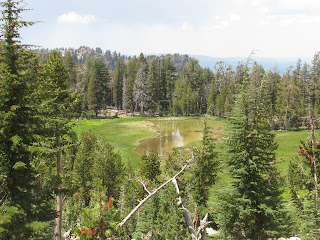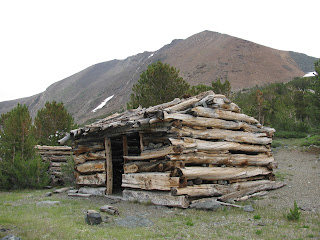Photo courtesy of the Friends of Black Rock
Last year, I decided to camp on the lifeless playa of the Black Rock Desert to get an unpolluted view of the annual Perseid Meteor Shower, which peaks around the second week of August. I had such a fantastic time, I decided to do it again this year. My hiking buddy, Bill, decided to join me this year.
Leaving right after work on Friday night, we took Bill's jeep the 100-ish miles from Reno to the campsite coordinates provided by the Friends of Black Rock organization. While one can camp nearly anywhere on the playa, the organization sets up a nice camp complete with portable toilets and it's always nice to meet and mingle with fellow campers. This year though with the extraordinary amounts of precipitation we received in the winter and spring, some parts of the playa are still either covered with water or the white mud that it turns the ground into. The organization found a good dry spot and I'm happy to take advantage of their scouting and generosity.
Arriving right around dusk, Bill and I quickly put our respective tents up and begin to get situated for the show. Unlike last year when I went to bed early and rose about 2:00 AM at moon set, the bright moon was scheduled to rise around 10:30 PM and so, the best viewing will be before and just after that time. In preparation for the assault of falling stars, we have a few beers and wait for the show.
As the sky changes from blue to orange to absolute pitch black, the sky transforms into a shooting gallery. It's difficult to catch them all because they blink into and out of view so very quickly. If you don't happen to be looking in the right direction at a given moment, you will not be quick enough to spin to see it when someone calls one out. That said though, we are able to spot probably around forty before the moonlight becomes a problem. The most interesting ones are presumably very close overhead, as we can occasionally see the steam trail in their wake. Finally, with both of us pretty tired, we turn in for the night, but what a great show it was.




























